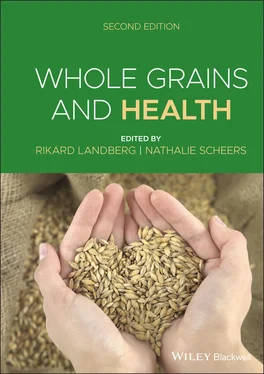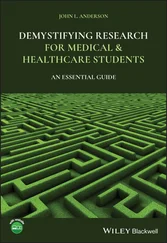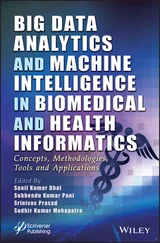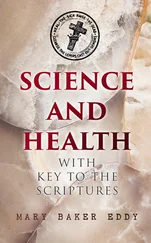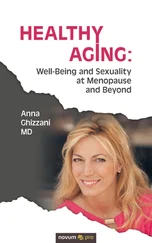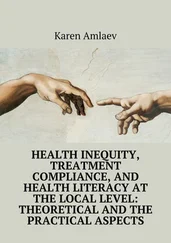Cereals are the most important crops in the world and are destined to become both human food and animal feed. Cereals, which belong to the grass family ( Gramineae ), produce dry, one‐seeded fruits. These fruits are, botanically speaking, caryopses, but they are commonly referred as “grains” or “kernels.” The cereal grains such as wheat, rice, maize, barley, oats, rye, sorghum and millet provide 50% of the food energy and 50% of the protein consumed on earth. Wheat, rice and corn constitute around 75% of world’s grain production (Ramaswamy and Riahi 2003). In this chapter, wheat is used as reference to explain the structure of cereal grain. Its kernels contain three main parts: embryo, endosperm and their covering layers. The last are, in milling, often separated as the bran fraction ( Figure 1.1A). If all the parts of the kernel are retained in processing, one can speak of whole grain. If either the bran or germ is separated from the kernel during milling, then it is a “refined grain.”
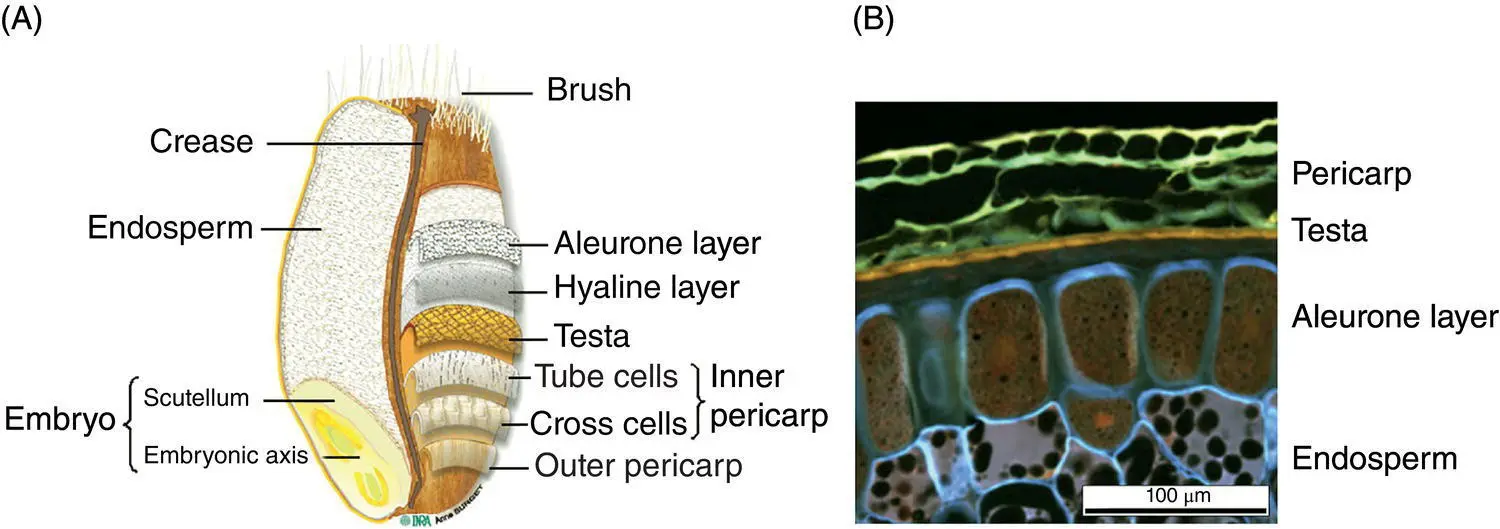
Figure 1.1 A: General structure of a cereal grain); B: Epifluorescence micrograph of parts of rye grain. The sections were stained with Acid Fuchsin and Calcofluor: protein appears red, cell walls rich in β‐glucan appear light blue and lignified cell walls of the pericarp appear yellowish‐orange. Structure of cereal foods
(Source: Hemery et al. 2007).
The embryonic axis (rudimentary root and shoot of the next generation) and the scutellum (storage organ) together constitute the embryo, which makes up 2.5% to 3.5% of the weight of the entire kernel in wheat. It is often referred to as germ, although, strictly speaking, the germ is the embryo‐rich fraction of the kernel produced during milling. Wheat germ contains protein (25%), sugar (18%), oil (16% of the embryonic axis and 32% of the scutellum), and it is also rich in vitamins B and E (Delcour and Hoseney 2010a). In the case of rye, the embryo constitutes about 3.8% of the weight of the grain and contains 37.2% of protein, 13.4% of lipids and 43.6% of carbohydrates (Lasztity 1999; Ellis 2007).
The endosperm is the largest tissue of the grain. It is the primary starch and protein storage site and the source for white flour. It contains protein, carbohydrates, iron and B‐vitamins, such as riboflavin, niacin and thiamine. However, it is nutritionally inferior to the whole grain. The endosperm comprises two different parts: the starchy endosperm and the aleurone layer. The aleurone is botanically part of the endosperm. However, in practice, it is most often part of the bran since it is removed together with the pericarp and testa during the milling process. The main part of the grain constitutes the starchy endosperm, which consists of cells packed with nutrients, mainly starch, to support the growth of the embryonic axis after germination. It is also rich in protein. In all cereals, there is an inverse gradient involving these two components. The protein content increases towards the periphery, while starch is more predominant towards the center of the kernel. Cell size also decreases towards the outside and this is accompanied by increasing cell wall thickness. The endosperm cell walls of wheat are mainly composed of arabinoxylans, while in barley and oats (1‐3)‐ and (1‐4)‐β‐D glucans predominate. The contribution of cellulose to the cereal endosperm cell wall is low except in the case of rice.
The bran consists of the hard outer layers of the kernel and, depending on the milling process, constitutes around 14% of the grain. Generally, wheat bran comprises approximately 12% water, 13–18% protein, 3.5% fat and 56% carbohydrates. Wheat bran can be chemically differentiated by the occurrence of complex structures of either C6‐sugars like cellulose or C5‐sugars like xylans. Phenolic compounds and their polymer lignin are found in different concentrations within the bran. It also contains a large quantity of B‐vitamins as well as insoluble dietary fibre (Prückler et al. 2014). From the histological point of view, wheat bran is composed of the pericarp, testa and aleurone layer.
The pericarp consists of several complete and incomplete layers of dry, largely empty cells. During development, it serves to protect and support the growing endosperm and embryo. The outer layers of wheat bran, pericarp and testa are formed by thick cell walls containing cellulose, lignin and complex xylans with high arabinose to xylose ratios and substitution by ferulic acid dehydromers as cross‐linkers between polymer chains (Hemery et al. 2007).
The testa is a hydrophobic, semipermeable layer under the pericarp, which contains a cuticle rich in lipidic compounds. The testa is the outermost tissue of the seed and may consist of one or two cellular layers. Almost all of the alkylresorcinols in the grain are localized in the testa of wheat, rye, triticale and, at much lower levels, in barley (Ross et al. 2003b; Landberg et al. 2008). Alkylresorcinols are antioxidant compounds whose main function is to protect the membrane against lipid peroxidation. They are commonly used as biomarkers for whole grain intake since they are absorbed and at least partially metabolized in the human intestine (Ross et al. 2003a; Linko et al. 2005).
The aleurone layer surrounds the starchy endosperm and part of the embryo, and makes up 5–8% of the kernel. It is usually constituted by a single cell layer except in the case of barley, which contains two to three layers. Aleurone cells do not contain starch but they have high protein content and they are rich in lipids. They release active enzymes that help the cereal grain grow into a plant. The main component of wheat and rye aleurone cell walls is arabinoxylan (Karin 2006). The aleurone cell walls in wheat are relatively thick (3–4 μm) and have been reported to possess high cellulose content and relatively linear arabinoxylans with low arabinose‐xylose ratio (Saulnier et al. 2007). Whole grain wheat contains less than 1% β‐glucan and the majority is located in the aleurone and subaleurone layers, while in whole grain rye ( Figure 1.1B), β‐glucan accounts for 1.5% of dry matter and seems to be more evenly distributed throughout the grain (Dornez et al. 2011; Frølich et al. 2013). The content of β‐glucan is higher in other cereals such as oat and barley, which contain 5% and 4.6%, respectively (Frølich et al. 2013). β‐Glucan in oat is more concentrated in the sub‐aleurone layers, while in barley it is evenly distributed across the starchy endosperm (Cui and Wang 2009). The aleurone layer also contains an important amount of minerals like magnesium and phosphorus, vitamins, and phenolic compounds, such as ferulic acid, and p‐coumaric acid. For instance, the aleurone layer contains almost all of the niacin and almost one‐third of the lysine found in wheat (Delcour and Hoseney 2010a).
Cereal grains possess a well‐organized microstructure. The endosperm is rich in starch and storage proteins located in protein bodies, and the cells are compartmentalized by cell wall polysaccharides ( Figure 1.2A). Indeed, especially refined cereal foods may be considered at the structural scale as a composite of starch and proteins blended with other ingredients such as fat, sugar and fibre. Processes such as milling, dough mixing, baking, rolling and extrusion cause large changes in the structure of proteins, starch and cell wall components and therefore affect the structure and quality of the end product (Autio and Salmenkallio‐Marttila 2001; Della Valle et al. 2014). The organization of the grain components at different structural levels contributes to the different characteristics among cereal products, as shown in Figure 1.2, and Figure 1.2B shows the microstructure of a rye porridge, where fragments are easily detected. The effect of baking and extrusion on the microstructure is shown in Figures 1.2C and 1.2D, where dough mixing and baking provides a continuous protein network while extrusion provides a continuous starch phase. In both cases, the generation of an aerated structure and the presence of pores are essential for the desired properties of this kind of products. The mechanical properties, which are highly associated with texture and to a great extent consumer acceptance, depend on the morphology of the product. For instance, the structure of porridge is composed of grain fragments in a continuous phase of released amylose from the starch granules and storage proteins ( Figure 1.2B). Wheat bread and cakes obtain their solid foam structure due to the continuous gluten network being able to retain air in open or closed cellular network ( Figure 1.2C), while many crispbread products and most ready‐to‐eat cereals, which include extruded products, obtain their crunchiness from the multiple air cell layers retained in a continuous starch phase ( Figure 1.2D).
Читать дальше
